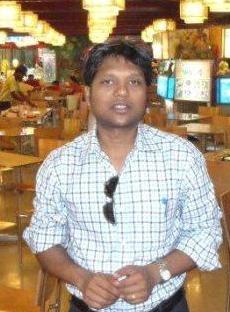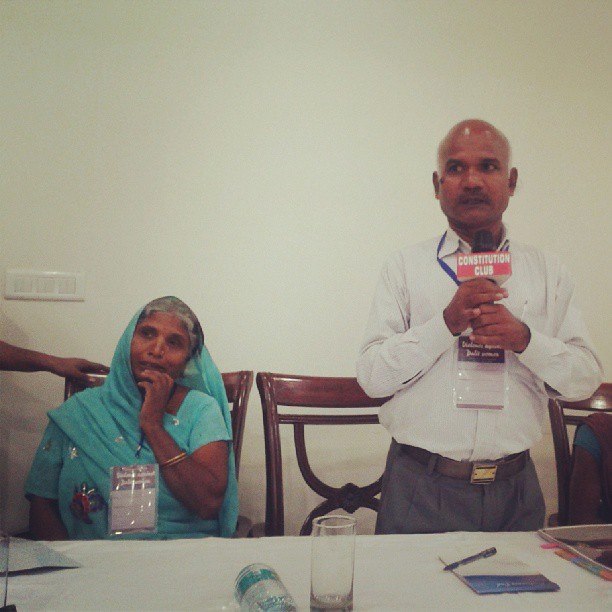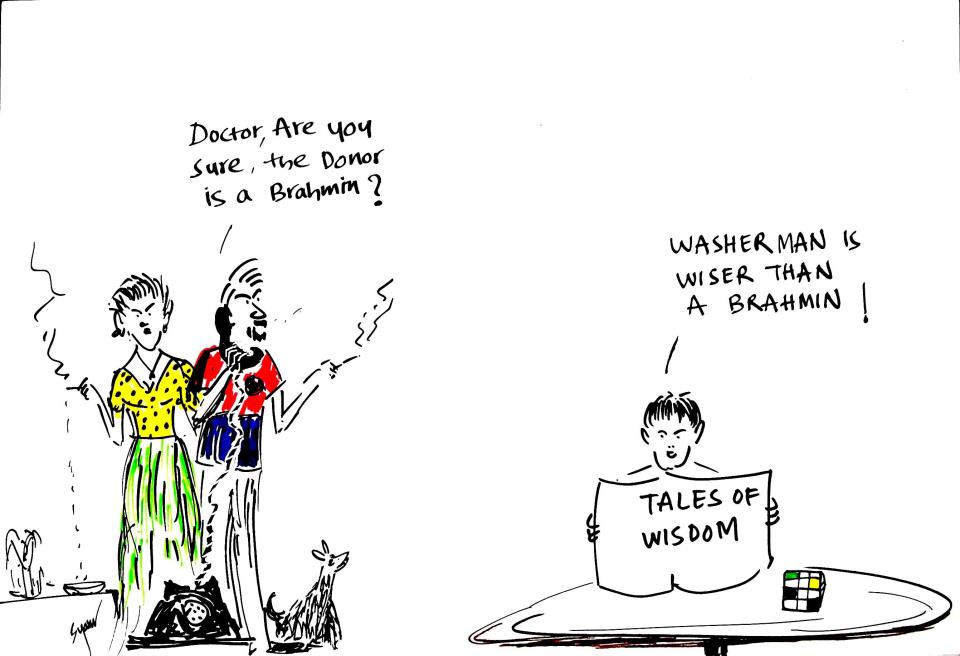Raju Solanki
Raju Solanki is an activist and poet based in Gujarat. This is the second part of his notes on Gujarat, the state of Dalits, minorities and other marginalized sections under Moditva (please read the first part here). This part of his notes exposes the hollowness of the myth of Dalit-Muslim confrontation during the 2002 riots and brings to light the decades long campaign that led to the rise of Hindutva hegemony in the state.
Hindu Society as such does not exist. It is only a collection of castes. Each caste is conscious of its existence. Its survival is the be all and end all of its existence. Castes do not even form a federation. A caste has no feeling that it is affiliated to other castes except when there is a Hindu-Muslim riot.
~ Dr. B. R. Ambedkar
“Time has come for the political encounter of Narendra Modi. Before thirty years nine Muslim MLAs got elected to Gujarat legislative assembly. Today there are only four. The remaining seats have been filled by BJP. To achieve this result BJP had instigated Dalits, Tribals and other backward castes. The seats which were grabbed from Muslims have been captured by BJP. Not a single Dalit, Tribal or OBC get elected from these seats. If Narendra Modi really wants Sadbhavna, he would have at least one Muslim minister in his cabinet….
Minister, Anandi Patel went to Dalit maholla of Patan and washed feet of dalit senior citizens. Dalits of entire Gujarat, particularly saffron dalits were pleased by this act. Anandibahen is doing this only for votes…. Even a youth of Godhara can become chief minister of Gujarat, provided he fights for the equality and justice for all. Dalits, Tribals and other backward castes are also in search if justice. If you fight for their rights, you will win definitely….”
~ Raju Solanki, in the Godhra convention “In search of justice”.
~
The Riots

In the year 2002, a train was burnt at Godhra railway station in Gujarat. 58 Hindus were charred to death in the tragedy. Riots spread like a prairie fire. Massacres like Gulbarg society, Naroda Patia, Sardarpura and Best Bakery showed the ugliest face of a state which is called the land of non-violence. What was the role of Gujarat government and police during the riots is now not a matter of speculation.
In fact, the moment the massacres started with the connivance of ministers and top bureaucrats, Modi government, instead of putting real culprits behind the bar, unleashed a reign of terror by arresting innocent people in Dalit-Muslim areas.
Table 1, shows the figures of total arrests made in the jurisdiction of 32 police stations in and around Ahmedabad just after the Godhra tragedy (i.e. during 1 March, 2002 to 4 June, 2002).
Table: 1
Police station wise breakup of arrests
Ahmedabad City
Amraiwadi 133, Ellisbridge 44, Odhav 27, Kagdpith 150, Karanj 56, Kalupur 44, Khadiya 34, Gomtipur 380, Ghalodiya 18, GIDC 44, Dariyapur 36, Dalillimada 390, Naroda 53, Navrangpura 38, Naranpura 66, Bapunagar 37, Maninagar 93, Madhupura 310, Meghaninagar 7, Rakhiyal 34, Vatava 116, Vejalpur 43, Saherkotda 87, Shahpur 122, Shahibhaug 77, Sarkhej 104, Sardanagar 28, Satelite 49, Sabarmati 104, Sola 9, Sola Highway 12, Haveli 186, Memnagar 4
Total 2945
The analysis of Table: 1 shows that:
~ From 1-3-2002 to 4-6-2002 the police arrested a total 2945 persons in areas under 33 police stations in and around Ahmedabad city.
~ Out of total arrested persons 1326 were from Dalit areas like Amaraiwadi (133), Kagadapith (150), Gomatipur (380), Danilimada (390), Haveli (186) and Shaherkotada (87). Thus, 45.05 percent (1326) of total arrests were from Dalit dominated areas.
~ In the areas of Dalits-Muslim neighbourhood, viz. Gomatipur (380), Danilimada (390), Shaherkotada (87) and Haveli (186), total 857 were arrested. Thus, 35.41 percent of total arrests were from Dalit-Muslim areas.
~ Police arrested only 17 persons in Meghaninagar, 28 in Sardarnagar and 53 in Naroda during this period. These are the places where the worst communal carnage like Gulbarg Society and Naroda Patia took place.
~ Was police searching for the accused of Gulbarg Society and Naroda Patia in Dalit areas ?
Who had provoked the violence? Who was victimized? We can’t get a true picture from these figures of arrests made under different police stations of Ahmedabad. Let us analyze the figures community wise.
~
Table: 2
Hindus formed the majority of arrested people. But, looking at the percentage of minority community (46.45 %), it is obvious that people of minorities were arrested on a large scale in proportion to their population.
It is important to know the percentage of various castes amongst the arrested Hindus.
Table: 3
Caste-Wise arrests
Thus, Caste Hindus including Brahmin, Bania and Patel, were only 33 out of arrested 1577 Hindus. Had Caste Hindu camaraderie of Narendra Modi, Pravin Togadia and Ashok Bhatt instructed police not to arrest Caste Hindu rioters who looted big stores like Pantaloons riding in maruti cars or those who had gutted the hotel Down Town just opposite Judges’ Bungalows?
Upper Caste Hindus were only 32 in number out of total 1577 Hindus who were arrested. The rest 1544 belonged to other backward castes (OBC) and Dalits.
Among Hindus, the number of Dalits was fifty percent.
After Godhra tragedy, most of the incidents of damaging properties of Muslims were systematically triggered in posh, affluent, upper caste dominated western Ahmedabad, where Muslim-owned hotels were ransacked and looted with planning and precision. Is it possible for Dalits living on the east side of the river to participate in this mayhem?
The figures of arrested people living on the west side of the city during the period (1-3-02 to 4-6-02) amply suggest partial, casteist attitude of the police: Ellisbridge (44), Ghatlodiya (18), Navrangpura (38), Naranpura (66), Satellite (49). Thus, only 215 persons were arrested on west side.
Dalit – Muslim Confrontation: A Myth

One may conclude from above mentioned figures that the number of arrests in Dalit-Muslim areas shows confrontation between two communities. This conclusion is false. Look at some basic facts:
~ In all areas where Dalits and Muslims live together not a single massacre took place.
~ Both communities are numerically in equal proportion. Nobody can subjugate anybody. If one community retaliates, it is only for survival.
~ During last 20 years more than 20 Dalit ghettoes (bastis, mahollas) were deserted in Muslim-dominated areas, like Jamalpur, Raikhad, Shahpur. Neither Dalits nor Muslims were responsible for the migration, because, after the anti-reservation movement of 1981, Hindu fascist forces decided to target Muslims and planned communal riots. Muslims turned back to the walled city for safer habitat, as upper caste dominated western side of the city was becoming increasingly intolerant of Muslims. This process ultimately resulted in Dalit migration from walled city areas.
~ Nobody has noticed this phenomenon. Dalits were bleeding. They were forced to leave their traditional ghettoes. And during these two decades the VHP systematically exploited the helplessness of Dalits, who could not realise that these were the same forces that were behind anti-reservation movements. I explained the plight of Dalits in a meeting on Dalit-Muslim dialogue organised by Mr. Ashgarali Engineer in Ahmedabad.
Constructing walls, destructing harmony: VHP shows the way
Caste Hindus blocked a narrow street which was used by Dalits of vankarvas in Shahpur of Ahmedabad city after the 1981 anti-reservation riots. Now, the lane which Dalits were forced to use was passing through Muslim areas.
After 1985 communal riots, life became unbearable for Dalits who were surrounded by both caste-Hindus and Muslims. Dalits were virtually under siege. In a highly charged situation one Muslim family was charred to death in Vankarvas. Police arrested Dalits, majority of who were government employees. Here entered VHP, as savior of Dalits. The VHP helped them by providing tiffins packed with meals in jail and arranging advocates to fight legal battle. Nobody asked the VHP why it hadn’t come forward to break that wall which was the cause of the trouble.
Poverty
In Ahmedabad, the population of Dalits is 7, 00,000 (i.e.17 %). The level of poverty amongst Dalits is reflected in a survey done by School of Planning in 1998. (See table: 4)
Table: 4
BPL SC families in Ahmedabad (1998)
Khadia 81, Kalupur 01, Dariyapur 30, Raikhad 300, Shahpur 750, Jamalpur 60, Paladi 428, Vasana 1,483, Gandhigram 409, Navrangpura 150, Sardar Stadium 667, Naranpura 253, Vadaj 1,117, Juna Vadaj 1,866, Sabarmati 1,907, Dudheswar 593, Madupura 1,501, Girdharnagar 1,007, Asarva 2,181, Naroda Road 2,951, Sarapur 650, Potalia 1,350, Kubernagar 736, Sardarnagar 750, Saijpurbogha 1,547, Thakkarbapanagar 120, Naroda Muthiya 347, Bapunagar 835, Rakhiyal 1,303, Gomtipur 1,250, Rajpur 1,642, Amaraiwadi 4,285, Bhaipura/Hatkeswar 1,735, Nikol Road 15, Odhav Road 988, Khokhara Mahemdavad 116, Maninagar 641, Kankaria 1,665, Baherampura 2,533, Danilimada 681, Bage firdos 91, Vatava 984, Isanpur 471
Total 42,476.
The survey provides the following important conclusions:
~ The number of SC families living below poverty line in Ahmedabad was 42,476.
~ Assuming average five members per family, 2,12,380 Dalits live below poverty line.
~ 30 percent of Dalit population in Ahmedabad lives in abject poverty.
~ The percentage of BPL families in Gujarat in 1999-2000 was 14.07 %. Thus proportion of poverty was double among dalits compared to average Gujaratis.
~ These were the figures of an economic capital like Ahmedabad. The situation in villages had to be worse.
Statistics of Poverty or Poverty of Statistics?
How credible is the survey of School of Planning can be measured by just one example. The survey mentions only one SC family living below poverty line in Kalupur area. According to our survey in this area there are more than 20 BPL families. In a meeting organized by Social Empowerment Department in Gandhinagar, I asked the minister if there was only one BPL family, then why was the government not able to raise it above poverty line.
There is another list of SC BPL families published by Rural Development Commissioner. It covers the entire state.
Table: 5
SC BPL families in Gujarat
~
Politics of Power
1981 Onwards
The year 1981 is very important in the political history of Gujarat. The year witnessed large scale anti-Dalit and anti-reservation riots. Seven Dalits were brutally murdered in the riots started by the Caste Hindus who enjoyed complete control over the state administration, judicial system, education etc. The reason for this absolute control was 2000 year old varna-vyavashtha. At several places across Ahmedabad and in the villages like Detroj and Uttar Sanda Dalit homes were razed and burnt down.
In retaliation to the atrocities committed by the Caste Hindus on them, Dalits boycotted Holi next year. Thousands of people attended conferences organized with the initiative of Dalit Panthers. Sangh Parivar was alarmed by the massive response these conferences generated amongst Dalits and the Muslims. To garner the support of Dalits, Adivasis and the OBCs, Sangh Parivar and saints like Sambhu Maharaj started targeting Muslims. This resulted in continuous communal clashes.
The areas dominated by the Caste Hindus in the city became inhabitable for the Muslims. The continuous communal clashes forced the Muslims to migrate to the walled area of the city. Consequently the Dalits became the victims the process. During the past twenty-five years more than twenty ghettos of Dalits in Muslim dominated areas have been deserted. Since the Dalits born after 1981 are not aware of the history of Dalit-Muslim unity in the city, they have been poached by the Sangh Parivar. Same has happened with the Muslim youths who have grown up with anti-Dalit feelings.
After 1985 when Congress was fast loosing its mass appeal due to corrupt policies, whatever was left of Muslim leadership in the city was finished. The crisis was absolute after the murder of politicians like Rauf Waliullah, who was a man of great integrity. During this political crisis, BJP riding on the wave of Hindutva captured the political space vacated by Congress. Established names in the field of literature also showed their fundamentalist mindsets by electing President of Vishwa Hindu Parishad, Mr. K. K. Shashtri as the President of Gujarati Sahitya Parishad. The election of K. K. Shastri as the president of Gujarati Sahitya Parishad legitimized Hindutva.
Agents of Hindutva: Past and Present

In 1985 when 27% reservation was granted to the OBCs, the bandh call given by the anti-reservationists witnessed even the closure of Hindu temples in the state. From 1981 to 1985 religious leaders like Pandurang Athwale tried to seduce OBC castes like rabari, waghri, thakor, kharwa, machimar in the Hindutva ideology. Pandurang used to say, “the thinking that one can trade in any business of their choice is not desirable, that’s why Ram killed Sambuk”. [Sanskriti Chintan, p. 147]
Last year in 2005 Jain religious saint Chandrashekhar Vijayji played an important role in filing writ petition against the slaughter houses in Supreme Court. He too like Pandurang started provoking Caste Hindus. As part of his anti-backward campaign Chandrashekhar said:
“a time will come when backward castes (BC) will capture all positions in the administration and politics. President BC, Prime Minister BC, employees in bank BC, military forces BC, everywhere BC and under their rule, the warrior caste (kshatriyas), Brahmins and intelligent Jains”.
“This will not benefit anyone. Not even BCs as they are not eligible for these fields. The BCs do not possess the inherited expertise and intelligence required for these fields. Education is not enough. This is not the way to bring them up”.
“Cultural experts proclaim that, if they are to be uplifted, their original traditional occupations need to be brought back. Harijans should be given the task of weaving and Girijans should be given dense forest”.
“Making someone like Jagjivan Ram minister, access to public water tanks will not help. This is cheating. It is a strategy to ruin OBCs by provoking them”.
Agents of Hindutva played a major role in the political emergence of BJP.
Political loss of Muslims: Whose gain?
In the 1981 Gujarat Assembly, there were 9 Muslim MLAs. The names of all these nine MLAs are given below:
Muslim Representatives: 1980-2006
~
Of the nine MLAs, at present only two have been able to reach the assembly. This can be termed as the outcome of Hindutva forces in the last thirty years. The assembly seats from where the Muslims were elected; now they have become the constituencies of upper Caste Hindus. Out of these nine seats six seats are captured by BJP. The loss of seats for the Muslims has not resulted in the increase of Assembly seats for the Dalits, Adivasis and OBCs. The political loss of the Muslims is the gain of upper caste Hindus (Brahmins, Bania, Patel). The political loss of the Muslims has in no way proved to be a gain for the Dalits, Adivasis and OBCs.
The meaning of Hindutva movement is “jamwa ma swarno, kutwa ma pachato” (in the feast – upper caste Hindus; in the battlefield – backward caste Hindus). As mentioned earlier, out of 2945 arrests made in Ahmedabad after 2002 riots, 797 were OBCs, 747 Dalits, 19 Patels, 2 Banias and 2 Brahmins. Caste Hindus got the assembly seats and backward Hindus got the jail.
In the recently conducted study by Indian Social Institute, Jahangirabad Media Institute and ActionAid India, it has been observed that Muslims are as marginalized as Dalits and tribals across the country. Though Muslims are marginalized across India, the agents of Hinduism shamelessly accuse the government of minority appeasement.
Please read the first part of Raju Solanki’s notes here.
~~~
Raju Solanki is a leading dalit poet and activist, and a freelance journalist. He is the President of Jati Nirmulan Sangh. As an activist, he has made important contributions towards dalit solidarity with women and minority groups. His collection of poetry is Mashal (1986), and his street play, Bamanvadni Barakhdi (c.1986). He regularly recites poetry with writers from other marginalized groups in slums for social change. His poetry is versatile with the powerful depiction of caste, gender, and religion politics.
He blogs here.
[Pictures courtesy: the net]









